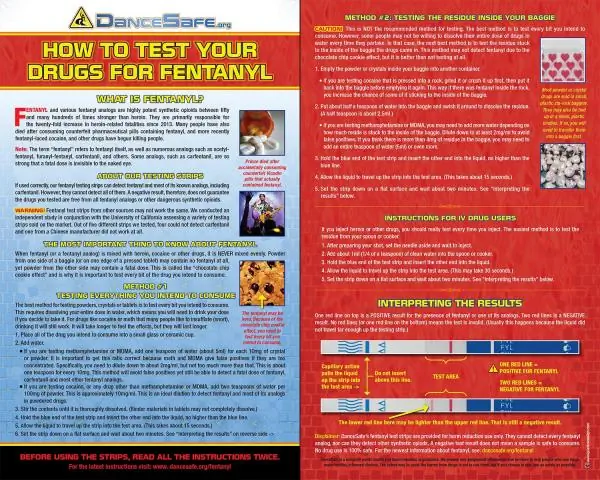- Author Rachel Wainwright [email protected].
- Public 2023-12-15 07:39.
- Last modified 2025-11-02 20:14.
Loratavel
Loratavel: instructions for use and reviews
- 1. Release form and composition
- 2. Pharmacological properties
- 3. Indications for use
- 4. Contraindications
- 5. Method of application and dosage
- 6. Side effects
- 7. Overdose
- 8. Special instructions
- 9. Application during pregnancy and lactation
- 10. Use in childhood
- 11. In case of impaired renal function
- 12. For violations of liver function
- 13. Use in the elderly
- 14. Drug interactions
- 15. Analogs
- 16. Terms and conditions of storage
- 17. Terms of dispensing from pharmacies
- 18. Reviews
- 19. Price in pharmacies
Latin name: Loratavel
ATX code: R06AX13
Active ingredient: loratadine (Loratadine)
Manufacturer: Velpharm, LLC (Russia)
Description and photo update: 2019-08-10
Prices in pharmacies: from 155 rubles.
Buy

Loratavel is an anti-allergic drug, H 1 -histamine receptor blocker.
Release form and composition
The drug is produced in the form of tablets: flat-cylindrical, round, almost white or white, with a line and a chamfer (10 pieces in a blister strip, in a cardboard box 1, 2 or 3 packages; 10, 20 or 30 pieces in a polymer can, in a cardboard box 1 can and instructions for the use of Loratavel).
1 tablet contains:
- active substance: loratadine - 10 mg;
- additional substances: sodium carboxymethyl starch (sodium starch glycolate, primogel), magnesium stearate, lactose monohydrate (milk sugar), corn starch, microcrystalline cellulose, talc, colloidal silicon dioxide (aerosil).
Pharmacological properties
Pharmacodynamics
Loratadine is a tricyclic compound with a pronounced antihistamine effect and related to blockers of peripheral H 1 -histamine receptors. The active substance has a quick and long-term antiallergic effect, starting to show an effect within the first 30 minutes after oral administration. The antihistamine effect reaches its maximum after 8-12 hours after the onset of action and lasts over 24 hours. The drug does not affect the central nervous system and does not pass through the blood-brain barrier.
When used in the recommended doses, the drug does not show sedative or anticholinergic effects - it does not affect the speed of psychomotor reactions and does not lead to drowsiness. During therapy with Loratavel, there is no prolongation of the QT interval on the electrocardiogram (ECG), provoked by the intake of the drug.
During long-term use of the drug, no clinically significant changes in physical examination data, vital signs, laboratory test results or ECG were recorded.
The active substance practically does not affect the cardiovascular system or the activity of the pacemaker and does not suppress the reuptake of norepinephrine.
Loratadine does not show significant selectivity for H 2 -histamine receptors.
Pharmacokinetics
The drug is intensively absorbed in the gastrointestinal tract (GIT). The period of reaching the maximum concentration (T max) of the active substance in the blood plasma is 1-1.5 hours, and its active metabolite (desloratadine) is 1.5-3.7 hours. Loratavel's intake with food does not change the maximum concentration (C max) loratadine and desloratadine, however, leads to an increase in their T max by 1 hour, while not affecting the therapeutic effect of the agent.
The plasma protein binding of loratadine is 97-99%, and desloratadine is 73-76%. The active metabolite of the active substance is formed with the participation of the cytochrome P450 3A4 system and, to a lesser extent, P450 2D6.
Over a period of more than 10 days, an average of 40% of the oral dose used is eliminated through the kidneys and 42% through the intestine, mainly in the form of conjugated metabolites. Approximately 27% of the dose of the drug after administration is excreted in the urine within 24 hours, while less than 1% of the active substance is unchanged.
The bioavailability of loratadine and its main metabolite is dose-dependent. The half-life (T ½) of loratadine can vary from 3 to 20 hours (mean value - 8.4 hours), and desloratadine - from 8.8 to 92 hours (mean value - 28 hours).
In patients with chronic kidney disease, Cmax and the area under the concentration-time curve (AUC) of loratadine and desloratadine increase compared with those in patients with normal renal function. T ½ of the active substance and its main derivative do not differ from those of healthy volunteers. In patients from this group, hemodialysis does not affect the pharmacokinetic characteristics of loratadine and its main metabolite.
In the presence of alcoholic liver damage, C max and AUC of loratadine and desloratadine increase by 2 times compared with these indicators in normal liver activity, T ½ increases depending on the severity of the lesion.
In elderly and younger healthy volunteers, the pharmacokinetic profiles of loratadine and its active derivative were comparable. In elderly patients, T ½ loratadine is 6.7-37 hours (average 18.2 hours), desloratadine - 11-39 hours (average 17.5 hours).
Indications for use
Loratavel is recommended for use to eliminate symptoms such as sneezing, rhinorrhea, itching of the nasal mucosa, watery eyes, itching and burning sensation in the eyes associated with the following diseases:
- allergic rhinitis - year-round and seasonal (pollinosis);
- allergic conjunctivitis.
It is also indicated for the treatment of chronic idiopathic urticaria.
Contraindications
Absolute:
- age up to 3 years and body weight less than 30 kg;
- lactation period;
- glucose-galactose malabsorption, lactose intolerance, lactase deficiency;
- hypersensitivity to any component of Loratavel.
Relative (use antiallergic drug with caution):
- period of pregnancy;
- severe violations of the liver.
Loratavel, instructions for use: method and dosage
Loratavel tablets are taken orally, regardless of the time of the meal.
Children from 3 to 12 years old with a body weight of more than 30 kg, adolescents over 12 years old, adults, including elderly patients, are recommended to take the drug once a day at a dose of 10 mg (1 tablet).
Side effects
In the course of clinical studies involving children 2-12 years old who received Loratavel, more often than in patients in the placebo group, there were disorders in the form of fatigue (1%), nervousness (2.3%), headache (2.7%) …
In studies involving adult patients, adverse reactions, the frequency of development of which was higher than with placebo, were recorded in 2% of patients using Loratavel. These side effects included insomnia (0.1%), headache (0.6%), increased appetite (0.5%), drowsiness (1.2%).
In addition, in the post-marketing period, there were extremely rare reports (<1/10 000) of the following adverse events: dry mouth, alopecia, fatigue, dizziness, gastrointestinal disorders, including nausea, gastritis; allergic reactions in the form of rash, anaphylaxis, including angioedema; liver dysfunctions, tachycardia, palpitations, convulsions.
Overdose
Symptoms of a loratadine overdose include: headache, drowsiness, tachycardia.
In case of suspicion of an overdose, an urgent need to consult a doctor. In this condition, symptomatic and supportive therapy is carried out, gastric lavage or intake of adsorbents (including crushed activated carbon with water) may be prescribed. With the help of hemodialysis, the drug is not excreted from the body. After carrying out all the prescribed measures, the patient should be under close supervision.
special instructions
If during the period of drug therapy it is necessary to conduct allergic skin tests, it must be stopped at least 48 hours before these tests are performed, since loratadine can affect their results.
Influence on the ability to drive vehicles and complex mechanisms
The negative impact of Loratavel on the ability to drive motor vehicles or other complex and potentially dangerous mechanisms has not been established. At the same time, when carrying out such activities against the background of therapy, caution should be exercised in view of the possible appearance of drowsiness.
Application during pregnancy and lactation
The safety of loratadine therapy in pregnant women has not been established. The use of Loratavel during pregnancy is possible only if the expected benefit for the woman significantly exceeds the possible threat to the health of the fetus.
Loratadine and desloratadine are excreted in breast milk, as a result of which, if it is necessary to treat with a drug during breastfeeding, it is necessary to transfer the child to artificial feeding.
Pediatric use
Children under the age of 3 years and with a body weight of less than 30 kg are contraindicated in taking Loratavel tablets.
With impaired renal function
No dose change is required in patients with chronic renal failure.
For violations of liver function
In severe violations of hepatic function, the drug should be taken with caution.
Adults and children with a body weight over 30 kg with a severe form of liver dysfunction are recommended to use Loratavel at an initial dose of 10 mg every other day.
Use in the elderly
Elderly patients do not need dose adjustment.
Drug interactions
- erythromycin, ketoconazole, cimetidine: there is an increase in the level of loratadine and its main metabolite in plasma, however, this increase is not clinically significant, including according to ECG data;
- ethanol: no increase in the effect of this substance on the central nervous system is recorded.
Analogs
Loratavel's analogs are: Alerpriv, Claridol, Clarisens, Claritin, Clarifer, Lomilan, Lomilan Solo, LoraGEXAL, Loratadin, Loratadin-Eco, Loratadin-Teva, Loratadin-Hemofarm, Loratadin-Akrikhinda, Loratadin Stahl etc.
Terms and conditions of storage
Store out of the reach of children, protected from light, at a temperature not exceeding 25 ° C.
The shelf life is 3 years.
Terms of dispensing from pharmacies
Available without a prescription.
Reviews about Loratavel
The extremely rare reviews about Loratavel found on medical websites are rather ambiguous. Some patients note that the drug, as well as all its analogues, which include loratadine, successfully helps to cope with the symptoms of allergic rhinitis, conjunctivitis, and chronic idiopathic urticaria. Other patients claim that Loratavel does not have the claimed therapeutic effect.
There are no complaints about side effects.
The price of Loratavel in pharmacies
There is no reliable information about the price of Loratavel, since the drug is currently not available in the pharmacy network. The cost of an analogue of the drug, Loratadine, can be 25-42 rubles. (10 tablets in a package) or 55-95 rubles. (30 tablets in a package).
Loratavel: prices in online pharmacies
|
Drug name Price Pharmacy |
|
Loratavel table 10 mg No. 10 155 RUB Buy |

Anna Kozlova Medical journalist About the author
Education: Rostov State Medical University, specialty "General Medicine".
Information about the drug is generalized, provided for informational purposes only and does not replace the official instructions. Self-medication is hazardous to health!






